UV Series
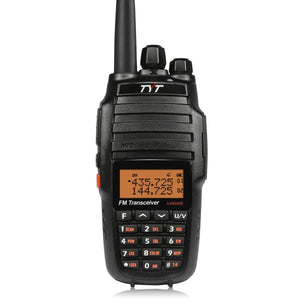
TH-UV8000E
Manuals & Software
Here you will find user manuals, device drivers and softwares for a wide range of our products.
MD Series
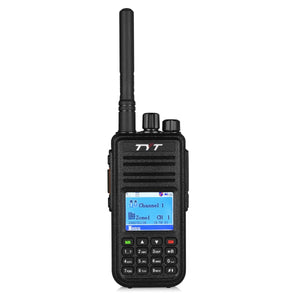
MD-380
Manuals & Software
Here you will find user manuals, device drivers and softwares for a wide range of our products.
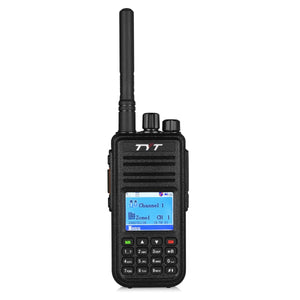
MD-380G
Manuals & Software
Here you will find user manuals, device drivers and softwares for a wide range of our products.
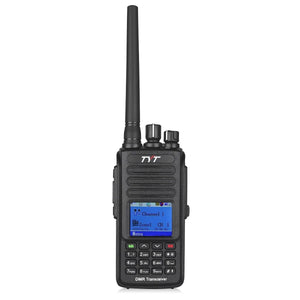
MD-390
Manuals & Software
Here you will find user manuals, device drivers and softwares for a wide range of our products.
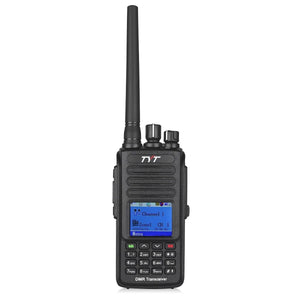
MD-390G
Manuals & Software
Here you will find user manuals, device drivers and softwares for a wide range of our products.
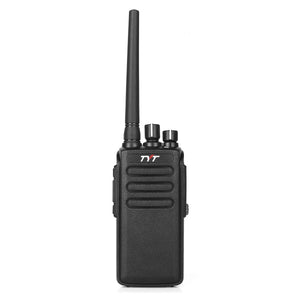
MD-680
Manuals & Software
Here you will find user manuals, device drivers and softwares for a wide range of our products.
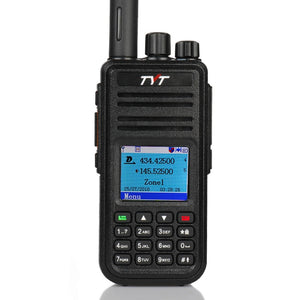
MD-UV380G
Manuals & Software
Here you will find user manuals, device drivers and softwares for a wide range of our products.
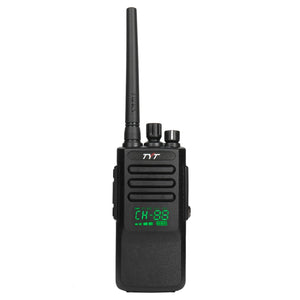
MD-680D
Manuals & Software
Here you will find user manuals, device drivers and softwares for a wide range of our products.
Mobile Car Radio
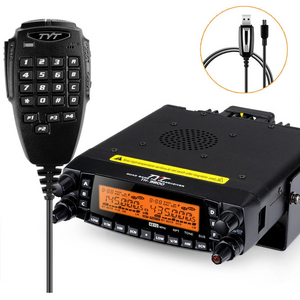
TH-9800
Manuals & Software
Here you will find user manuals, device drivers and softwares for a wide range of our products.
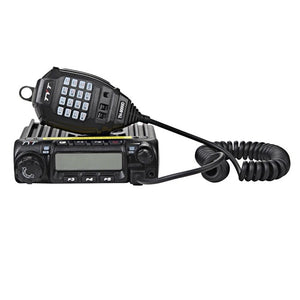
TH-9000D
Manuals & Software
Here you will find user manuals, device drivers and softwares for a wide range of our products.
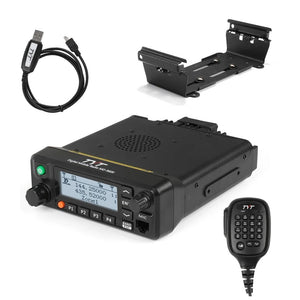
MD-9600
Manuals & Software
Here you will find user manuals, device drivers and softwares for a wide range of our products.
TYT (Tytera) is a chinese manufacturer of commercial
and amateur radios. These radios are popular due to their relatively low cost
and versatility.
Presented 2021-01-01
Video [slides]
Info and Stock Software
This page will focus on using the following models for Ham radio applications,
particularly on the Brandmeister and PNWDigital DMR networks:
- TYT MD-380: Monoband DMR Handheld available in VHF and UHF variants.
- Stock manual
- Support custom firmware
- Contact database
- Last heard
- Promiscuous Mode
- After market manual
- Stock CPS: 2020-05-08 firmware D15.01 for MD-380 new vocode
- Limits:
- 1000 Channels
- 10,000 Contacts
- 250 Scan lists (of 32 channels each)
- 250 Zones (of 16 channels each)
- TYT MD-390
- Same as above, but with built in GPS
- TYT MD-UV380: Dualband VHF+UHF DMR Handheld
- Stock manual
- Stock firmware now supports digital contact database and monitor
- No custom firmware support at all
- Stock CPS: 2020-03-16 MD-UV380, MD-UV390 firmware
- Stock MD-UV380 Firmware 2019-11-20 MD-UV380, MD-UV390 firmware
- Limits:
- 3000 Channels
- 10,000 Contacts (or 120K with ContactListCSV firmware)
- 250 Scan lists (of 64 channels each)
- 250 Zones (of 64 channels each)
- TYT MD-UV390
- Same as above, but with built in GPS
Additional Software
USB Driver (Windows)
Windows may require the STM32 DFU driver (requires an email address to download the package) direct link — may not work, try entering an email address.
NOTE: The TYT radios use a “dumb” passthrough cable. It will not appear as
a USB device unless it is plugged into the radio and turned ON.
Note: Linux USB works without any special driver.
Farnsworth editcp (Windows/Linux)
Highly recommend the aftermarket CPS
editcp by Dale Farnsworth
which supports all 380/390 variants and allows for conversion between the
different radios.
Additionally editcp runs on windows and linux and supports JSON
import/export for interfacing with scripts
and codeplug generators such as dzcb.
editcp is capable of reading and writing the codeplug and contact database
over USB, so the official CPS is not required.
N0GSG DMR Contact Manager supports a
variety of radio codeplug formats. It is primarily used to download, filter,
and reformat the DMR contact database to match the size and format appropriate
for your radio.
For TYT radios the contact limit is either 10K or 120K (for UV380/UV390 with
CSV firmware).
The tool can also be used to cobble codeplugs together from different types
of radios. Since it can read and write native codeplug formats, it doesn’t
require the use the spreadsheets or CSV munging.
Codeplug Layout
Contacts map a DMR ID to a Name.
Talkgroups
a “Talkgroup” is a way of routing and filtering traffic. A “Group Call” contact
should be added to the “Digital Contact” list for each talkgroup the radio
will receive or transmit on.
Group List
Also known as RX lists. A group list defines a set of Group Call contacts
that can all be received on a given channel. A common use for Group List is
to monitor other static talkgroups on a particular repeater timeslot to
avoid interrupting other traffic on the timeslot that may be coming from a
different talkgroup.
Private Call
Private call is typically only used for mapping callsigns and names to
IDs. Recommend the use of N0GSG contact manager to automatically import
the DMR contact database.
On the UV380 “ContactsCSV” firmware, the DMR contact database is managed
separately, and Private Call contacts are not used.
Channels
A channel is either Analog or Digital mode.
- Channel Name: 16 character channel name. Doesn’t have to be unique,
but recommended for your sanity. For digital repeaters, the name
typically includes the talkgroup, timeslot, and shortened repeater name/code. - Admit Criteria: when the radio allows transmit
- Always: “impolite” mode. OK for analog, but not advised for digital.
- Channel Free: transmit when no carrier heard on RX frequency
- Correct CTCSS/CDCSS: transmit when the received signal does not
match the configured TX tone (analog only) - Color Code: transmit when the received signal does not match the
configured Color Code (digital only)
- Band Width: 12.5, 20, 25 (KHz)
- Only configurable for Analog channels
- Most analog repeaters are 25
- FRS / GMRS / MURS unlicensed frequencies use 12.5 or 20
- Scan List: The channel scanlist will be used when the scan feature is
enabled and this channel is selected. - RX / TX Ref Frequency: Adjust the radio’s internal clock frequency to
shift interferance from used frequencies to unused frequencies. This
setting is almost never used. - TOT: Time-Out-Timer. Radio will stop transmitting after the number of
seconds elapses. I personally use a 90 second TOT, just to avoid
talking forever. Depending on the channel / repeater a different value
may be desirable to avoid timing out the repeater. - TOT Rekey Delay: If the TOT is triggered, the radio will wait for this
delay before transmitting again. -
Power: High / Middle / Low
- Auto Scan: the channel enters scan mode when selected
- Rx Only: don’t allow transmit on this channel. Useful for public
safety or unlicensed channels. - Lone Worker: require the user to press a button or enter emergency mode. NOT USED by amateurs.
- VOX: Activate PTT when mic detects audio
- Allow Talkaround: If talkaround is enabled, use RX settings for TX. NOT USED by amateurs.
- Send/Receive GPS Info: For 390 variants, also send GPS data. NOT USED by amateurs.
Analog
- Squelch: appears in the “common” section, but only applies to Analog channels.
Recommend “1”. - CTCSS/DCS Dec: Open the squelch for received signals matching this tone
- CTCSS/DCS Enc: Include this tone when transmitting
- RX / TX Signalling System: DTMF signalling. NOT USED by amateurs.
- QT Reverse / Non-QT/DQT Turn-off: NOT USED by amateurs.
- Display PTT ID: Leave off. NOT USED by amateurs.
Digital
- Contact Name: The channel transmits on this talkgroup
- Group List: The channel receives traffic for all talkgroups in the list.
- Color Code: Analogous to CTCSS tone for DMR repeaters. Most use color code 1.
- Repeater Slot: The timeslot to transmit / receive on. A channel can
be on either TS 1 or TS 2. A particular channel will not
receive traffic from the other slot unless promiscuous mode (MD-380) or
monitor mode (MD-UV380) is enabled. However a TS 1 channel on “A” band and
TS 2 channel on “B” band will allow dual timeslot monitoring in normal
mode. - In Call Criteria: Determines how the radio responds when currently receiving
a call on the channel. Typically “Follow Admit Criteria” should be used.
Unused commercial settings (LEAVE ALL TURNED OFF)
These settings are for commercial dispatch environments and don’t really
make sense for currently deployed Ham infrastructure.
- Private Call Confirmed: Amateurs typically don’t use private call
- Emergency Alarm Ack: allow radio to respond to dispatch emergency alert
- Data Call Confirmed: use a reliable data transport.
- DCDM Switch: Unknown.
- Emergency System: Unused.
- Privacy: Unused. Part 97 doesn’t allow for obscured communications in most cases.
- GPS System: Unused.
Zones
Zones are generally a collection of Digital Channels for a single repeater
or Analog Channels for a particular area (city, county, etc).
Each zone has a name of 16 or fewer characters. On the MD-380/390, a zone contains up
to 16 channels. On the MD-UV380/390, a zone has both an “A” band (top row)
and a “B” band (bottom row) of 64 channels each.
A zone may contain mixed analog and digital channels.
The zone list may be reordered with editcp or N0GSG. The stock CPS does not
allow reordering the zone list.
Scanlists
A scanlist consists of 32 or fewer channels that are scanned together.
Each channel may have a default scanlist set, but any scanlist can
be used with any channel by selecting it from the menu.
A scanlist provides several options to control the scan:
- Priority Channel 1/2: These channels are checked 50% of the time.
Even when the radio is receiving traffic from a different scan
channel, it will still check the priority channels. - TX Designated Channel: This channel will be used when PTT is pressed.
- Selected — the channel selected in the zone
- Last Active — the last channel to receive traffic
- Explicitly specify a channel for the list
- Signalling Hold Time (default 500ms): Controls how long the radio will
monitor an Analog channel to decode a DTMF sequence. Typically NOT used
by amateurs. - Priority Sample Time (default: 2000ms): How often the radio will check
the priority channel when the scan is receiving a signal on another
channel. Lower values will make the received audio choppy. Higher values
could result in missed calls on the priority channel.
Other Resources
- ARRL Ohio has some excellent DMR presentations
- MD-380 Codeplug Explained
- Codeplug Programming — Explaination of all relevant settings
-
About TYT
Company Profile Enterprise culture Certifications PP and QC
-
Products
DMR Products
Analog two way radios
POC
Accessories
-
News
Company news Trade news
-
Contact Us
Contact Us Become A dealer
-
TYT Electronics Co., Ltd.
Tel:0086-595-27770858
E-mail:overseas@tyt888.com
Add: Block 39-1, Optoelectronics-information industry
base, Nan’an, Quanzhou, Fujian
All Rights Reserved© 2019-2022 TYT Electronics Co., Ltd. 闽ICP备09011264号 BY:KEW
Table of Contents for TYT MD-390:
-
~y Number································-········-··········-············-71 Versions·····-····-············-··········—········-············-····-·-···-71 Program Radio· -.- — — -.- — -.-.- — — — -. 72 RxFrequency····-····——————————-
-
3. Press [D orD] key to radio settings, and then press [e] key to selecl. 4. Press [D orD] key to keypad lock, then press [e] key to selecl. 5. Press [D orD] key to manual, and then press [e] key to select, screen show to se- lect Manual, you need to long press [ GI ] key to lock keypad on the mai n interface. 6. Press [D orD] key 5S, 10S, 15S, the screen shows to select the corresponding time, then keypad will be locked and return to the main screen if user have not any keypad op- eration
-
124 t Emergency Function Emergency alarm only use to transfer emergency situations, you can release a emerge cali at anytime and anywhere . Even the walkie talkie is busy in transferring or receiving Radio support 3 types of emergency cali: • Emergency Cali • Cali follow emergency alarm • A voice follow emergency alert Moreover: alarm has the following types: • Prohibit: radio can not send emergency cali but can receive . • Local + Remote: An emergency cali w
-
Switch On Overview User’s Manual Clockwise to turn on the radio volume knob, there will be a «KADA» sound , message sou while the LED indicator lights up and becomes Green color if the battery is full charg Notice: if ali LED indicators are forbidden, the screen will not light up when switch on th walkie talkie, but with a message sound . Notice: if the Tones/Alerts is forbidden ,there will not any sound when power on . Her need to power off the walkie talkie and anticlockwise with th
-
211 3. Screen will show emergency cali successful, then speak clearly .When under activate emergency microphone, radio transfer automatically without press [PTT] key before d ation within limits 4. During transfer , LED indicator becomes red and emergency alarm mark will show on scre 5. After the time of emergency microphone, radio stop to transmit .Press [PTT] key to tre smit again If the radio under the «Silence» mode, there are not any sounds or notices ring the emergency mode, not receive calls from target walkie talkie, until pass the pr pr
-
Ali Tones If desired, you can enable or disable ali radio Ione and prompls (excepl emergency incom- ing Ione). Press pre-programmed ali Beep ON / OFF lo turn on or off ali radio tones, Use the menu funclion: 1. Press [ e] key lo enter Ihe menu mode. 2. Press [D orD] key lo utilities, and Ihen press [e ] key lo select. 3. Press [D orD] key lo radio settings, and Ihen press the [e] key lo sele
-
CONTENTS Emergency Alarm — — —- — — — — — — — — — — — — — — — — — — — — — — — — — — — — — — — — — — — — — — — — — — — — — 25 Emergency Alarm Cali — — — — — — — — — — — — — — — — — — — — — — — — — — — — — — — — — — — — — — — — — -·25 Voice Emergency Alarm- — — — — — — — — — — — — —- — — — — — — — — — — — — — — — — — -·26 Re-start Emergency Mode — — — — — — — — — — — — — — — — — — — — — — — — — — — — — — — — — — — — — — — — — — — — — — — 27 Logout Emergency Mode — — — — — —
-
To customers Thank you very much for using our two-way radioso This product has a newly developed function menu and humanism operation designo making it easy to use. It will meet your requirement by the compact size and reasonable price. ~ I f I
-
» MD~390· Waterproof Transceìver • AnaÌcig and Digital combined • Use TDMA digital technotoçv- • Complying with digital protocoi ETSITS 102;36-1. -2, -3 • Compatible with Mototrbo Tier I & Il • GES optional I • Firmware ‘Uf3gradeable » USER’S MANUAL ‘. . ‘J , ‘ . , , «. ‘
-
Utilities Utilities includes the following contents: • Radio settings • Radio Info • Program Radio Radio Settings Radio Setting includes: • Talkaround • Tones/Alerts • Power • Backlight • Squelch • Intro Screen • Keypad Lock • Language • LED Indicator ·VOX • Passwd Lock • Clock • Mode 591 — Talkaround I l When the transponder does not work, or when the radio located outside the range of the transponder but located within the range of other radios cali, you can continue to commun- icate. This
-
Or if the message was not sent, issued a high tone hint sound, and screen displays text message sent failure. If message sent failure, intercom chance to return to the retransmis sion options screen. Press the [ 131 key to send SMS weight to the same user/group name or ID. Note: Except for Pessing the [13 I ,[D or D I key, if you change the volume and the pre- ss any other key, will return to this message. When you press [PTT] for a single cali or group cali, or as a response to the group calling,radio will exit the
-
lo select. 7. Press Ihe number keys lo enler Ihe corresponding number, press [ D] key lo delete Ihe lasl number, press [ e] lo return lo Ihe previous menu. 8. After finish Ihe change, press [ e] key, Ihe screen displays receiving frequency has been saved. Nole: Ediling frequency will be limiled wilhin Ihe frequency range setted by programming software, if less Ihan Ihe wrile frequency range setted by software, Ihe final change resull will be Ihe m
Questions, Opinions and Exploitation Impressions:
You can ask a question, express your opinion or share our experience of TYT MD-390 device using right now.



